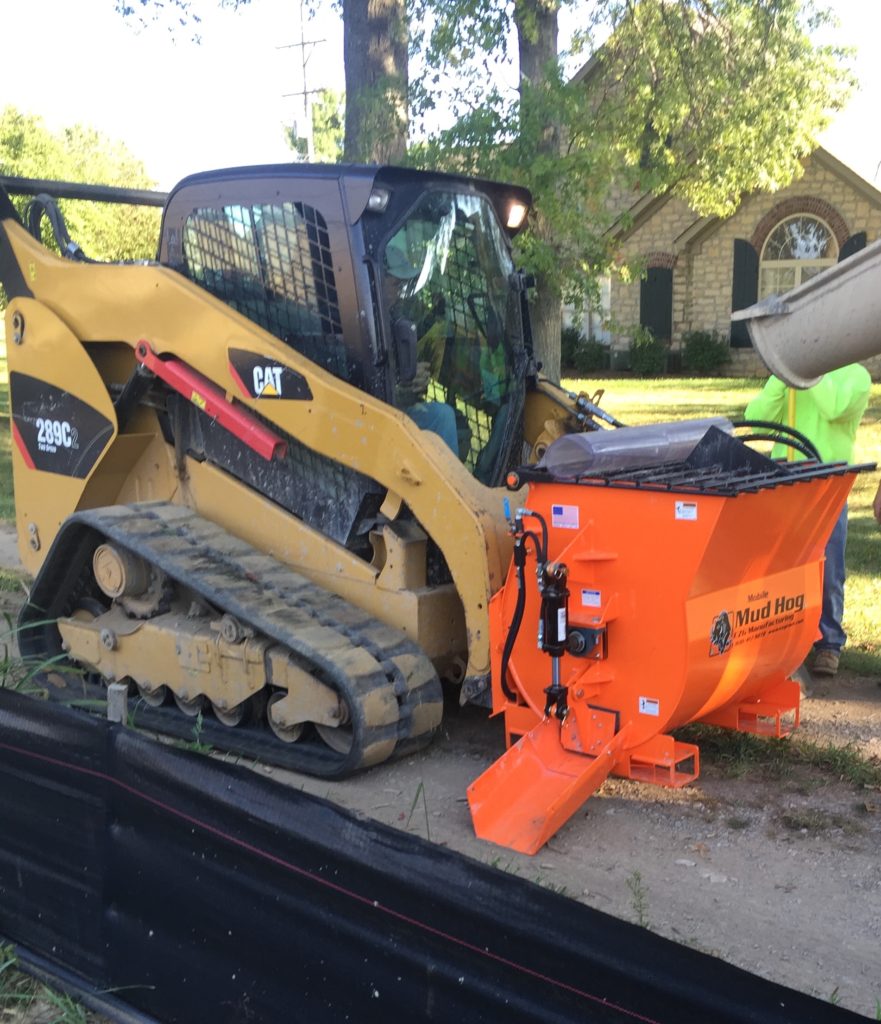Words: Christopher Rodermond
Photos: EZG Manufacturing
Getting grout and mortar prepared and delivered to a wall can be one of the most laborious tasks on the jobsite. But luckily, there are a variety of tools and delivery systems to accomplish these tasks, and choosing the right process can save a lot of time and money on a project. The height of the project, vehicle access, and amount of material that will be needed are some of the essential factors to consider when figuring out what you might need to use.
A representative of a major innovator in the industry, EZG Manufacturing, who manufactures and markets the Grout Hog and Mud Hog, among other machines, told us to consider these other factors when choosing the right system:
- The type of material and where the material needs to be placed, which will determine the type of delivery system that would be the most efficient.
- The type of equipment that will be used to deliver the material, for example, a telehandler or a skid steer machine.
- The type of power systems that can be used. Most delivery systems are either gas-powered by an engine or hydraulic power from a telehandler or skid steer.
For smaller projects and specialized work, the bucket and drill-based mortar mixer is still the tried and true method for mixing and delivering material to the site of work. Auger-style drill attachments have not changed much over the years. Still, if you find yourself using this method frequently, you may be interested in investing in a bucket mixing machine.
These types of machines are usually electric, have a lid with blades, and the machine rotates the bucket. These machines usually come mounted with two wheels for wheelbarrow-style movement. The advantage of an in bucket mixer or hand mixing here is that it will save your arms and shoulders some serious wear and tear. However, these products and techniques aren’t used as much on a major jobsite.
For the remainder of this article, we will focus on the bigger projects, and that require more heavy-duty equipment to get the job done, which we categorize in roughly three groups, although there are overlaps. Each delivery system may be combined with different mixing systems depending on the needs of the job. Those three groups are pumps, booms and crane systems, and buggies.
Pumps:
Provided you have your mixing solution settled. You might find that a pump machine will be the best way to deliver the mixed material to the site of application. There are a variety of machines on the market that do this job.
However, for grout, there are all-in-one machines that mix and pump the grout, like this one from Airplaco. This system has a 30-gallon capacity, can be wheel-mounted or put on a skid steer, and has an output capacity of 50 cu./ft. per hour. The pressure maxes out at 250 psi and can be used for jobs like void filling and slab packing.
Boom System:
The advantage of these systems is that while on the ground, they can be easily loaded, and then, when attached to a forklift or suspended from a crane, the lifting is done by the machines and gravity is the primary driver from getting the mortar from the bucket to the mason. Probably the most well known of these systems is EZG’s Grout Hog. As Steve Wheeler from EZG told us about one of their machines:
The Mobile Mud Hog was built to allow easy pours in difficult terrain. The Mobile Mud Hog has a built-in universal skid steer attachment plate as well as fork pockets. We have combined our unique mixing paddles with a slide gate on the side of the machine that gives the contractor a way to mix and then deliver their material in one machine.
The Mobile Mud Hogs differ in the way that they have mixing blades and not an auger to move material from the hopper. These are typically hydraulic-powered but there are a couple of models available with gas engines. The Mobile Mud Hogs can vary in size from 4cuft to 20cuft.
Another option for the boom or crane system is a silo dispenser, which in the same way, reduces the strain on the laborers in carrying dry material. The product can be hoisted by crane to be positioned over the mixer, thus reducing a great amount of manual labor.
Buggy:
One way to think of this class of machine is as a motorized wheelbarrow. Although, that may be a little like calling a Harley a motorized bicycle.
These large capacities, motorized material carriers can come with either tracks or wheels depending on the terrain and the distance needed to cover, as well as the material being carried. For off-grid and remote transport of mortar, as well as situations where multiple trips will be needed, these can be invaluable time and back-saving devices. Most of the machines in this category allow for the operator to ride along with the materials while managing the controls. Companies such as Multiquip and Toro are just two of many companies out there that allow for deliverability for grout and mortar.
To all those that came before us, who never had a chance to use anything but a bucket or a wheelbarrow, rope, or their backs, we salute your hard work and dedication and respect you even more for all that you did without the power and ingenuity of what is out there today. We are humbled!
